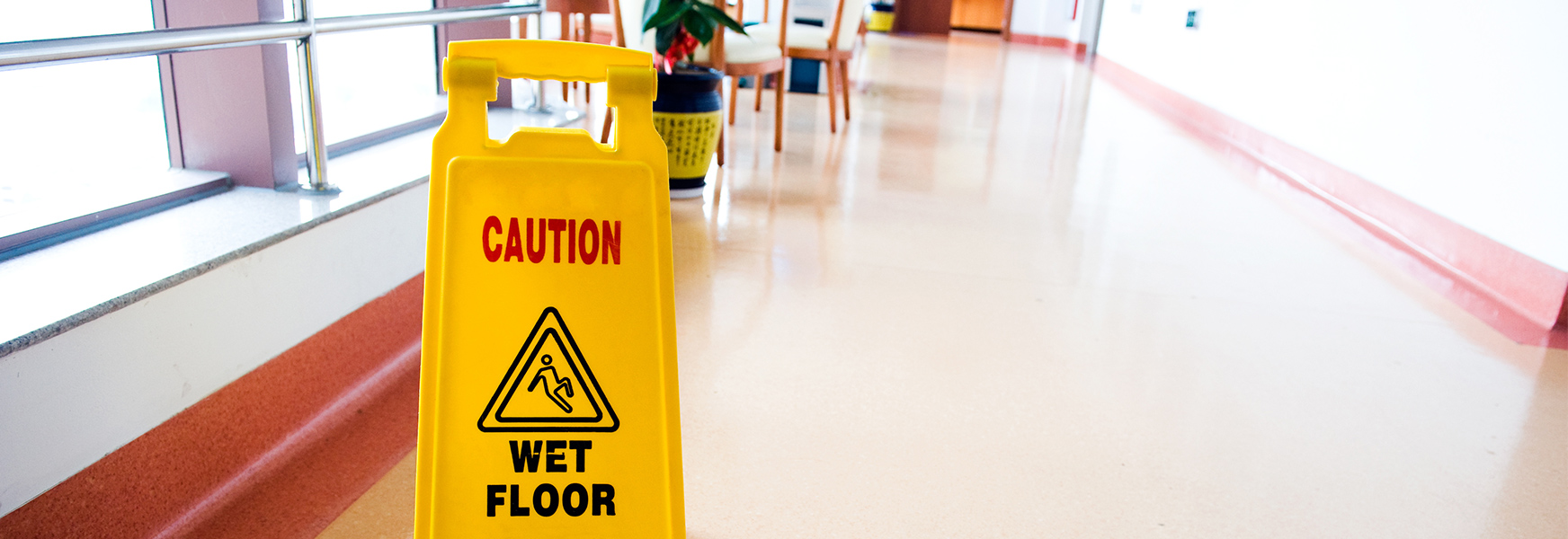Slip and Fall: What’s Under Our Feet? Solutions Can Be Found on the Surface

Slips/Trips/Falls (STFs) are common across all industries. In fact, STFs are among the top three injuries that continue to impact our policyholders’ insurance costs. A recent analysis conducted by the National Floor Safety Institute (NFSI) identified that 50% of STFs arise due to walkway surfaces (condition, type, and environmental factors), while only 24% of STFs result from footwear issues.
On March 18, 2021 at 10:00AM EST, MEMIC is offering a free policyholder webinar, “Slip and Fall: What’s Under Your Feet? Solutions Can Be Found on the Surface.” After reading this post if you have further interest in reducing STF injuries follow this link to register for this informative 1-hour webinar.
There are many factors that contribute to slips and falls. Unfortunately, many businesses don’t look deep enough to find the root cause of the slip/fall injuries so that the problem can be permanently solved. The common denominator is the floor surface. That doesn’t mean that the current floor surface is not the correct type. In fact, most new floor installations are appropriate for the occupancy. Often the problem is what is done with the floor after installation.
Contaminants on the floor are the leading cause of slip/falls. Water, fluids, and residue build-up from organic compounds and cleaning materials can significantly impact floor traction. According to an Emory University/CNA study in 2015, 87% of slip/fall claims occur on moderate or low traction walkways. First, it’s important to know how much traction your existing floor produces. Traction is defined as the friction produced between two surfaces. The higher the friction, the better the grip. Using a Tribometer to measure a floor’s coefficient of friction and comparing it to a national standard will provide a solid baseline. With this valuable information, you can select floor cleaning and maintenance processes that appropriately manage floor traction to acceptable levels. A typical mop and bucket method using generic cleaning solutions often does not produce the desired traction results. Selection and use of floor cleaning materials, maintenance products, and application style all play an important part in maintaining high traction floors.
There are limited situations when a good floor maintenance program is not enough to achieve the appropriate floor traction. In these situations, it may be necessary to consider floor coatings or treatments that improve the coefficient of friction. This is done by altering the floor surface by etching or adding an aggregate coating. Floor coatings are typically permanent. Applying a floor treatment using anti-slip topical applications can also be effective and less expensive but does require regular re-application.
Footwear is often the first choice employers make to solve slip/fall hazards, but as we’ve noted above, there are many other options to control the slip/fall root source. Choosing slip-resistant footwear is a secondary, yet still important, addition to reducing the slip/fall hazard.
There is a specific category of footwear designed to respond to a slippery surface by resisting slippage in wet, greasy, or oily environments. The tread patterns are designed for optimal contact with the floor while providing channels to shed water and oil. MEMIC recommends slip-resistant footwear for food service, healthcare, manufacturing, or anywhere wet or oily conditions exist.
Like all footwear, slip-resistant shoes do not last forever. An October 2020 article in Applied Ergonomics proposed a simple guideline for slip-resistant shoe replacement. If the heel of a slip-resistant shoe has a smooth area greater than the diameter of an A-size battery (or AA for more conservative approach), then it’s time to replace. This guideline replaces an older reference that typically recommends replacement after six months or a year. The beauty of this guideline is that it is easy to implement and takes little training. A simple visual inspection by anyone will identify shoes that need replacement.
For more information about slip/fall hazards register for our March 18 webinar and check out our additional safety resources at MEMIC.com.
Posted by John DeRoia, Tonya Hawker, and Maureen Anderson

